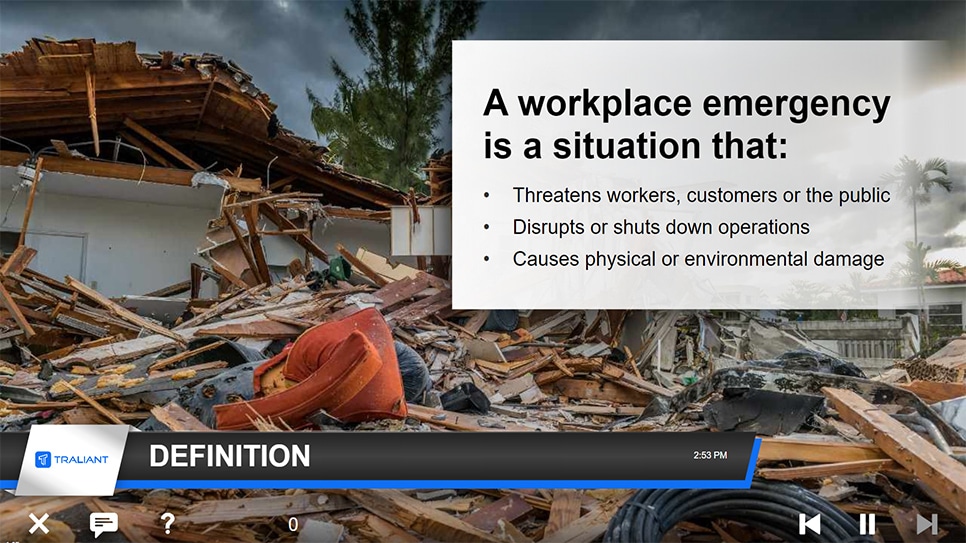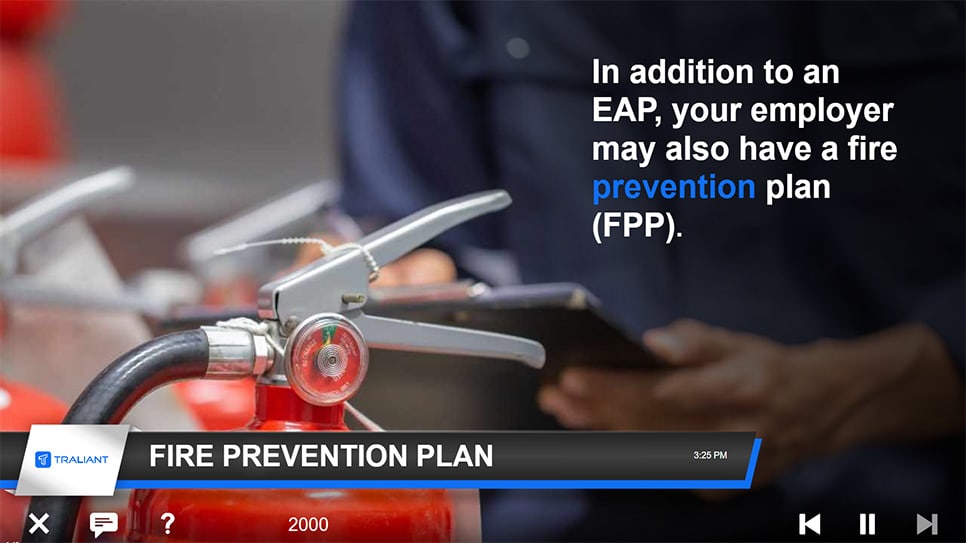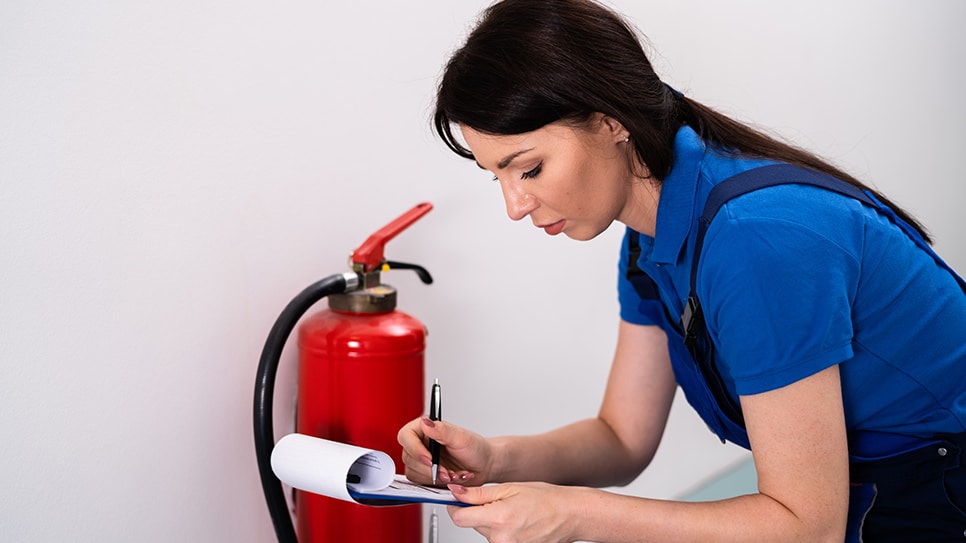
Emergency Preparedness and Response
Training employees on emergency preparedness and specific action plans prepares them to quickly respond during a potentially life-threatening situation.
Course description
Traliant’s Emergency Preparedness and Response training is a 25-minute course that provides response and guidance on different workplace emergencies for both on-site and remote workers. Topics include the required elements of an Emergency Action Plan and Fire Prevention plan, and what employees should know about exit routes in the event an evacuation is required.
Emergency response training helps employers ensure the safety and well-being of employees in the event of an emergency. This training provides employees an opportunity to review guidance and procedures for different shelter-in-place emergencies unique to their environment, work setting and geographic location.
ONLINE TRAINING
Emergency Preparedness and Response

This course covers these topics and more:
- The importance of Emergency Action Plans (EAP)
- The importance of Fire Protection Plan (FPP)
- Benefits and purpose of an Emergency Action Plan (EAP)
- Required elements of an Emergency Action Plan (EAP)
KEY FEATURES
Why you'll love our training
It’s time to embrace a new era of online training with a valued partner who will ensure seamless implementation, along with a learning experience your employees will truly enjoy.
Course administration
Traliant makes it simple to roll out training to your workplace and provide technical support directly to your employees at no additional cost.
Course customizations
Tailor courses to include your logo, relevant policies, workplace images, and more. Traliant can even customize the course with scenarios that take place in your own workplace environment.
Translations
Training is available in English, Spanish and is supported in over 100 languages.
What to consider when choosing the most effective emergency preparedness and response training for employees

- Protect employees and visitors: Training helps to ensure the safety of employees and anyone else who may be on the premises during an emergency.
- Minimize risks and damage: Being prepared for emergencies can help to minimize the potential for injuries, property damage, and business disruption.
- Comply with OSHA regulations: The Occupational Safety and Health Administration (OSHA) recommends that all employers have an emergency action plan (EAP) and that they provide training to employees.
- Empower employees: Training provides employees with the knowledge and skills they need to react quickly and calmly in an emergency, which can help to prevent panic and confusion.
- Strengthen your organization's emergency plan: Training helps to ensure that the company's emergency plan is effective and that employees understand their roles and responsibilities.
- Create a culture of safety: Training promotes a culture of safety and preparedness, where employees are aware of potential risks and are prepared to take action.
- Evacuation procedures: Designated exit routes and procedures for evacuating the building.
- Emergency contact information: Contact information for emergency responders and key personnel.
- Procedures for specific emergencies: Procedures for handling different types of emergencies, such as fires, floods, earthquakes, and active shooter situations.
- Fire prevention measures: Procedures for preventing fires, such as proper storage of flammable materials and regular inspections of fire safety equipment.
- Fire detection and alarm systems: Information about fire alarms and sprinkler systems.
- Fire suppression equipment: Locations of fire extinguishers, fire hoses, and other fire suppression equipment.
- Know the evacuation routes: Employees should be familiar with the designated exit routes and evacuation procedures.
- Stay calm: It's important to stay calm during an emergency.
- Follow instructions: Listen to instructions from emergency responders and designated personnel.
- Assist others if possible: Help others who may need assistance evacuating or taking shelter.
- Report your location: Once you are safe, report your location to emergency responders or designated personnel.
- Regularly review and update the EAP and FPP: Make sure that the plans are up to date and relevant to the current workplace and potential risks.
- Conduct drills and exercises: Regularly conduct drills to test the EAP and FPP and to familiarize employees with emergency procedures.
- Provide regular training: Provide ongoing training to ensure that employees are up to date on emergency procedures.














